* (restored)
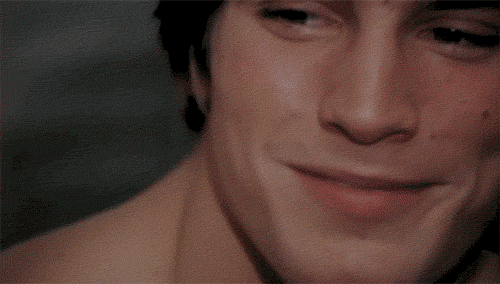
‘Monique von Vooren was mesmerized by his “translucent skin”; Sylvia Miles called it “the warmest in the world.” To Holly Woodlawn he was “a nice guy” and “a real gentleman”; to Paul Morrissey, a “great actor” on par with John Wayne. Andy Warhol said, “In my movies, everyone’s in love with Joe Dallesandro.” Even stuffy rags like the New York Times were uncharacteristically earthy in their reaction: “His physique is so magnificently shaped that men as well as women become disconnected at the sight of him.”
‘For legions of 1960s gay men, “Little Joe,” as his famous bicep tattoo identifies him, was a fantasy fuck without peer, familiar initially from drool-inducing images in physique magazines and a few hardcore loops made before his “rise” to the underground at the Warhol Factory at the tender age of 18. Working-class Joe, born in 1948 and a product of New York’s foster homes and reform schools, was unique among Warhol’s menagerie of pathologically self-deluded, speed-talking “superstars.” If most of them made up in personality what they lacked in looks or humanity, Joe was just the opposite — a sweet, shy, deliriously sexy cipher whose unflappable calm provided its own kind of campy counterpoint to Warhol’s shrieking harridans and maniacal drag queens. While Mary Woronov, Viva Superstar, Holly Woodlawn, Ultra Violet, and others have extended their cinematic self-love-fest with an endless stream of autobiographies, Joe reversed the trend by staying mostly silent and out of the public eye after the Warhol/Morrissey years.
‘Michael Ferguson’s Little Joe, Superstar: The Films of Joe Dallesandro, then, comes as a bit of surprise. Loosely modeled on the famous The Films of…series from Citadel Press, and heavily illustrated with pictures — including full frontal nude — and poster art, this long-overdue book was made with its subject’s cooperation and features an almost alarmingly forthcoming Joe. In the biographical section at the beginning, he talks extensively about his troubled personal history. It’s not hard to see Joe’s enigmatic smile and quiet cockiness as a natural defensive response to having a mother in the state pen for auto theft, and a father who cared but couldn’t cope and put him and his siblings into foster homes. Growing up in Brooklyn and Long Island, Joe says he “started getting bad around 12 or 13″ — brawling (often after remarks about his short stature, officially 5’6”), stealing cars, assaulting a school principal, and living on the streets, where he eventually turned to modeling and hustling to support himself.
‘The book documents his problems with booze and drugs, his difficult marriages and hetero affairs, and his stormy relationship with Warhol and Morrissey. On the latter subject, Joe sensibly insists there’s no reason for him to be bitter about being exploited in the eight films — from The Loves of Ondine (1967) to Blood for Dracula (1974) — they made together; after all, they made him famous. (This doesn’t prevent him from calling Warhol’s art “idiotic.”) Ferguson draws an amusingly weird picture of the strange production circumstances of the films, with Warhol and Morrissey too cheap to use a decent camera or lights or a script or to pay their actors more than a pittance even when the films were hits. He also lets Joe clear up some longstanding misconceptions — e.g., the idea that Joe was actually shooting drugs in Trash.
‘Ferguson authoritatively describes the films’ worldwide reception and censorship problems, star tantrums and rivalries, and a group of shocked Arizona tourists who stumbled onto the set of Lonesome Cowboys, where the mock-rape of Viva by a bunch of New York queens dressed in western drag brought the law. The book uncovers ultra-rarities like the 1968 “AIP beach movie satire” San Diego Surf (with Joe, Viva, and Taylor Mead). The fact that this was never released and isn’t likely to be makes its appearance here welcome indeed. Devout cheapskates Warhol and Morrissey kept their major superstar busy when he wasn’t making films for them, relegating him to Factory receptionist, handyman, and watchdog, aided by a stuffed Great Dane placed menacingly at the door.
‘His post-Factory career has a few highlights, including Louis Malle’s Black Moon, Jacques Rivette’s Merry-Go-Round, Serge Gainsbourg’s Je T’aime Moi Non Plus, as well as small but slid roles in such respected film directors as Stephen Soderbergh, Francis Ford Coppola, Catherine Breillat, and others, but mostly it’s low-budget European actioners, most of which (judging from the descriptions) failed to take advantage of what the Warhol/Morrisey films knew was Joe’s lure: his tantalizing flesh. The book devotes at least a page, and often more, to these obscurities.
‘Little Joe: Superstar supplies a lot of fresh information about his early career in southern California exposing his charms for companies like Athletic Model Guild, but true aficionados will be disappointed — particularly given his admission here that he considers himself bisexual — that his hustling, porn work, and implied gay affairs are either glossed over or ignored. Still, with its energetic text, wealth of anecdotes, and numerous pix of our hero’s mesmerizing smile and eternally erect nipples, Little Joe: Superstar is well worth the price.’ — Bright Lights Journal
___
Stills
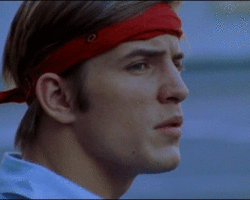





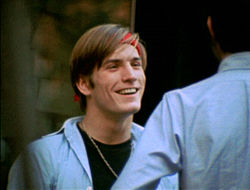


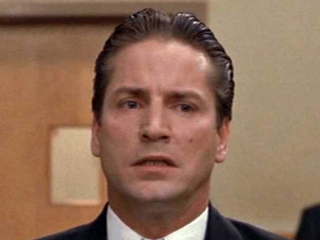
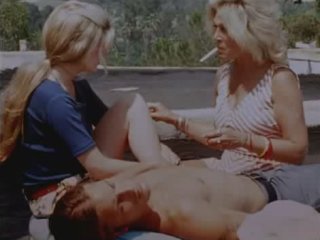






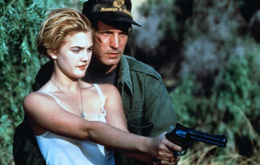





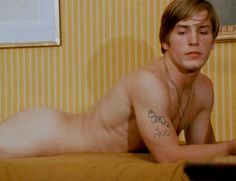
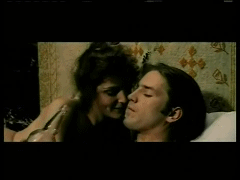
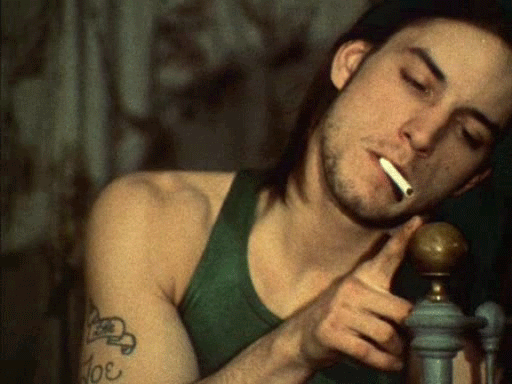



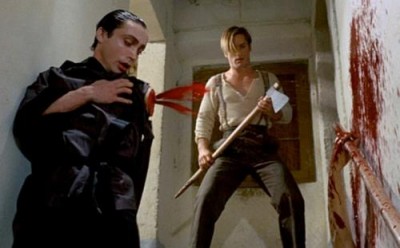
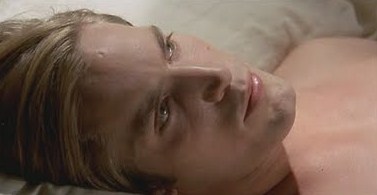
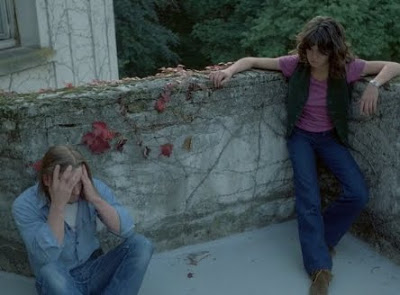

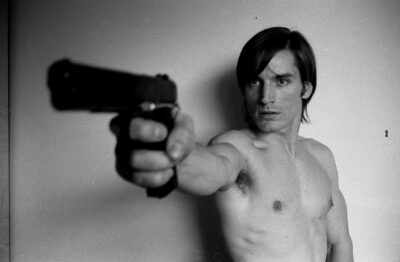
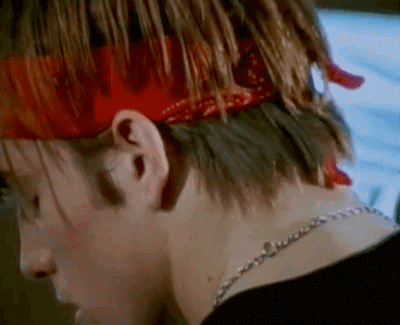











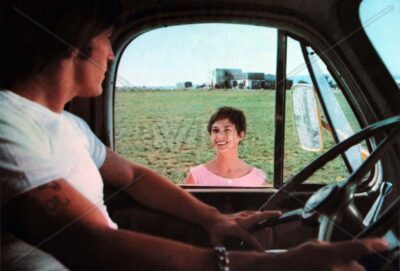
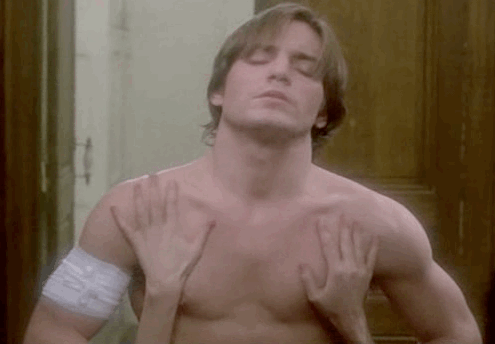




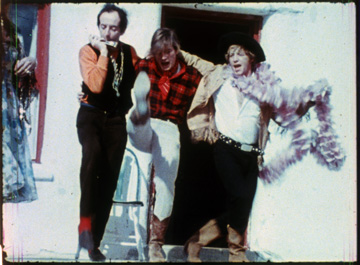

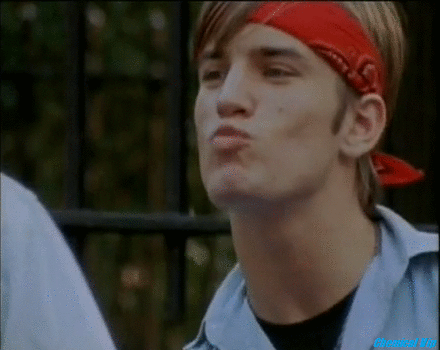







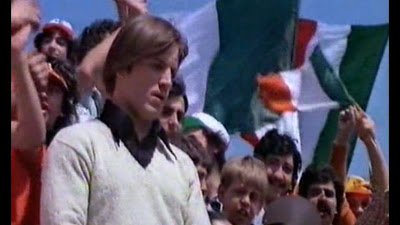
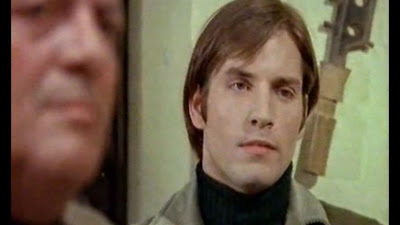

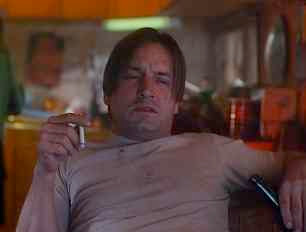
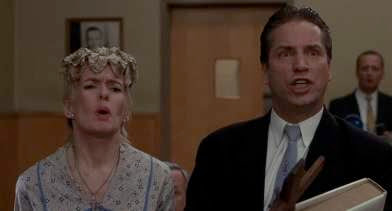




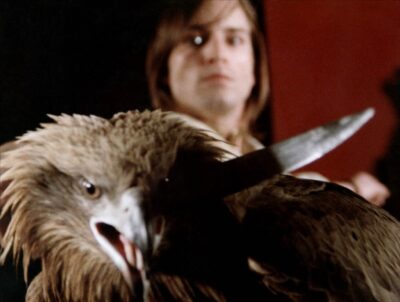





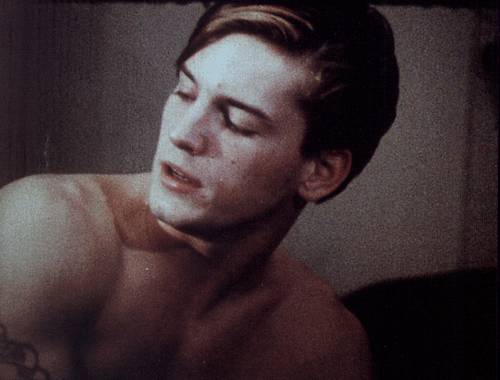
____
Further
Joe Dallesandro Fansite
Joe Dallesandro @ IMDb
‘Underground icon: the secret history of Joe Dallesandro’
‘JOE DALLESANDRO: THE WARHOL-ERA SEX SYMBOL TALKS’
Joe Dallesandro @ Twitter
‘Joe Dallesandro: An underground icon’
‘Hey Joe’
Joe Dallesandro w/Tina Lyons
Joe Dallesandro @ The Criterion Collection
Joe Dallesandro @ mubi
‘A juvenile delinquent, Joe Dallesandro supported himself … ‘
‘LITTLE JOE – Punk Globe’
‘Body of Work: Joe Dallesandro on ‘Je T’aime Moi Non Plus’
‘Breakfast with: Joe Dallesandro’
‘Mind the Image: Joe Dallesandro’
‘The Myth, The Legend, The Man: Joe Dallesandro Rules!’
‘L’HOMMAGE DE SAINT LAURENT À JOE DALLESANDRO’
Fuck Yeah Little Joe
‘The Legendary House of Dallesandro’
‘Art & Sex & Rock & Roll … a conversation with Joe Dallesandro in Hollywood’
‘TRAVIS-SMITH-OUT-2015-JOE-DALLESANDRO-INSPIRED-FASHION-PHOTO-SHOOT’
___
Extras
Joe Dallesandro turns 41 (1989)
Joe Dallesandro interview from “Superstar in a Housedress”
JO
E DALLESANDRO – CITROEN commercial (1997)
Smalltown, by Lou Reed & John Cale, performed by Joe Dallesandro, SXSW 2014 Tribute to Lou Reed
James St. James & Joe Dallesandro
____
Interview
from Interview Magazine

GLENN O’BRIEN: Hey, Joe.
JOE DALLESANDRO: Hey, Glenn. How you doing?
O’BRIEN: I’m pretty good.
DALLESANDRO: Good, good.
O’BRIEN: I loved your film.
DALLESANDRO: Oh, you got to see it?
O’BRIEN: You know, people always talk about a film being “a feel-good picture,” but I really felt this was one of those.
DALLESANDRO: I think I’m kind of a positive guy.
O’BRIEN: That’s the way you come off. Even though you go through a lot, you handle it with poise.
DALLESANDRO: I think so. [laughs]
O’BRIEN: I’ve known you for a long time, but there’s a lot of stuff in there that really surprised me. I didn’t realize how many films you’ve made. You’ve made about 50—which is a lot for somebody who can’t act.
DALLESANDRO: That’s for sure. [both laugh] I’ve been fooling ’em for years. But I have a good time with it, every time. What fans I have, they appreciate me, and I kinda like that. I mean, I got a really great reception in Berlin.
O’BRIEN: Um, I was kidding about the acting.
DALLESANDRO: I know, I know.
O’BRIEN: You’re the kind of actor who, because you don’t say a lot, people kind of project . . .
DALLESANDRO: Well, you know, I’ve had many different images from my Warhol days, with the underground movies there—people thought everything they saw me do in those was my real life. And then there were my European days, where I did my Italian shoot-’em-ups and stuff. Not Westerns, but these kinds of young-kid gangster movies. That was another image. Neither one was really me.
O’BRIEN: So this documentary about your life . . .
DALLESANDRO: We finished it for the Berlin festival.
O’BRIEN: And then what’s going to happen with it?
DALLESANDRO: We’ve got a couple more festivals we’re gonna do. We’ll probably do more than a couple. I know we’re gonna go up to Seattle. That’s the next step. Then San Francisco.
O’BRIEN: How did this documentary come about?
DALLESANDRO: Well, it was my daughter Vedra’s idea. Because she had read something that I had written . . . These people had asked me to write something for the younger people about beauty. And what I wrote really impressed my daughter, and we got together, and she said, “Let’s tell your story, or at least the part that people want to hear about.” So we did. I wanted to do it as inexpensively as possible—you know, just pick up a camera and shoot it, with me telling stories. Nicole [Haeusser] did a fine job of making sense of the stories I was telling, and putting them together, because I’d start a story and then I’d finish it maybe the next day.
O’BRIEN: How did you hook up with Nicole?
DALLESANDRO: Vedra found her. Actually they made another film together. So they worked together, and Vedra brought her in to meet me, and I thought it was great.
O’BRIEN: The toughest thing must have been chasing down all that footage from those obscure European films, right?
DALLESANDRO: Yeah, Vedra did all of that. I think I have them all on video, so I had a lot of the stuff already. And then there was the guy who was a neighbor in New York City who lived across the street and had shot this thing of me and Paul [Morrissey] out on a stoop on Sixth Street, and we got to use that. I met him in Texas, I was there doing a Q&A; for Je T’aime [1976]. They wanted me to come out there because there were a lot of fans. And so I went, and the person who headed up this show said, “I got this footage of you that I shot many years ago on Super 8 out my window.” So he sent us his footage, and we put it in the film. I thought it was pretty cool.
O’BRIEN: Have you been in touch with Paul Morrissey over the last 10 years or so?
DALLESANDRO: Me and Paul have stayed close. Paul still treats me like, you know . . . [laughs] like the person he met 30 years ago. That’s pretty cool. And the fact that I’m 60 doesn’t seem to enter into anything.
O’BRIEN: Well, we’re about the same age, but Paul seemed like another generation. I don’t know how much older he is.
DALLESANDRO: I know. Well, he’s 10 years older than both of us, you know. He’s in his seventies, and he turned into a grouchy old man. But that’s okay. [laughs]
O’BRIEN: Well, he was pretty grouchy as a young man. [both laugh]
DALLESANDRO: He was grouchy back then, too. But I’ve pretty much stayed the same guy you met years and years ago. I don’t change. Just get older.
O’BRIEN: What did you make of Paul? I mean, the contradiction of making these films about all the things he was really always griping about—drugs and freaks and drag queens. Paul was always at the Factory saying, “Get that drug trash out of here.” And then he’s directing you shooting up.
DALLESANDRO: I’m sure it was weird for him, but he felt it was a necessary part of the story he wanted to show. I remember him saying once that he was tired of films like Easy Rider [1969], you know, glamorizing smoking pot or drugs. He wanted to show drugs for what they really were. I mean, the biggest hope a drug addict could have was to get on welfare, you know? So I think he made his little points in his films.
O’BRIEN: Was Trash all Paul’s concept?
DALLESANDRO: It was all his idea, yeah. Original idea by Paul Morrissey. Most of the work we did together was an original idea of Paul Morrissey’s. He based it on and around some truths about me, so they seemed realistic, but the fact that my life has some similarities has nothing to do with the films themselves. They weren’t documents of my life.
O’BRIEN: Yeah, but was Paul saying, “Okay, Joe, shoot up now”?
DALLESANDRO: [laughs] Who can remember? It was a long time ago. I just remember we used one of Brigid Polk’s old poking needles.
O’BRIEN: Oh, that’s funny.
DALLESANDRO: Yeah, and it was all burnt up and fucked up. [laughs] We just cleaned it real well. It was like shoving a nail into my arm, but I thought the more hideous it was, the better. The humor came from having the drag queen Holly [Woodlawn]. She made herself a star from that, you know—for what little it was worth. You know, none of these people were able to continue this into a career, which I managed to do. Something came from doing the Warhol films for me . . . It was my school.
O’BRIEN: But after you went and did Frankenstein and Dracula with Paul and Andy in Europe, how did you then make the break from them? How did you make that first film without them? Did you get an agent?
DALLESANDRO: No. I had two films signed almost before I’d finished Frankenstein and Dracula. So it was Pasquale Squitieri. He wanted to make a movie with me, but Vittorio Salerno came along first with this movie with Andréa Ferréol that I so
much wanted to do because of her. I’d seen her in this other movie Le Grande Bouffe [1973], and I had to do this movie with her because I thought she was fantastic. To play a fascist in my first Italian film was not the coolest way to start off a career in Italy. But I did it, and the next one I did was a young-guy gangster-type thing, which was fun.
O’BRIEN: Did you know anything about your family’s roots in Italy?
DALLESANDRO: Yeah. I’m Italian on my father’s side—he was Sicilian, and they were from a little town outside of Palermo called Trapani.
O’BRIEN: Oh, I know Trapani. They make a nice sea salt.
DALLESANDRO: Yeah, it’s not far from Palermo. I never made a purposeful trip down there to go see Trapani. I just happened to get down to that area and we passed through it.
O’BRIEN: Did you learn how to speak Italian?
DALLESANDRO: Yeah, but just basics. I found that most of my Italian friends wanted to learn to speak English, and so they spoke English around me.
O’BRIEN: I read somewhere that you had been up for the part of Michael Corleone [in The Godfather].
DALLESANDRO: Mmm . . . yeah, there was talk, but that was all. There were no meetings or anything.
O’BRIEN: Wasn’t it your Warhol reputation that did you in?
DALLESANDRO: Well, there were questions. “Do you think Joe could ever do this if we set up a meeting?” And Paul’s remark was, “I don’t think Joe can do a script.” And Andy’s remark was, “I think he does drugs.”
O’BRIEN: Do you think Andy said that just because he was trying to hang on to you?
DALLESANDRO: No. I think it was said because that’s what he thought. Andy didn’t usually say things unless he was making a joke. But that doesn’t sound like he was making a joke.
O’BRIEN: Well, the joke was on you.
DALLESANDRO: I know that Andy was afraid of me for years, and that’s why I basically was up there at the Factory—to scare people away.
O’BRIEN: I think Andy was afraid of everybody.
DALLESANDRO: I mean, my brother worked as his chauffeur for many years, and Andy wasn’t afraid of him. My brother and Andy talked for hours. And when my brother would come home and tell me all these long conversations, I was in disbelief because, you know, me and Andy never said more than three or four words together.
O’BRIEN: Well, Bobby Dallesandro was kind of a chatterbox. He talked a lot, so he did a lot of the work. I think Andy was afraid of people who didn’t say much. So, out of all the films you’ve made, which one do you think is closest to your own character?
DALLESANDRO: You mean of the Warhol films?
O’BRIEN: No, I mean of everything.
DALLESANDRO: Of everything? [laughs] No, there just is nothing that represents me. They all give me a chance to play somebody else. My life was very different.
O’BRIEN: You haven’t lived in New York for a long time. How did you adapt to being a Californian?
DALLESANDRO: Real well, because I was born in Florida—and I never was one to deal with the cold very well. When I was younger, it didn’t faze me, but as I got older, it wasn’t something I was ready to go back to after my stay in Europe. In Europe, I did real well, made lots of money, and I was able to go away for the cold months to some resort area. I never stayed in Rome when it got cold. I’d go somewhere else.
O’BRIEN: So how come you’re not living in Europe now? Because of your kids?
DALLESANDRO: Because of deaths that happened in my life. You know, being that far away just seemed absurd. It just seemed I’d come back speaking baby English, having lived in Europe, because you’re trying to make people understand you. People thought I was an idiot when I first came back from Europe after 10 years, because I had a funny way of speaking English. Anyway, I’ve been home a long time now, and I still have funny ways of speaking English.
O’BRIEN: Are you a grandpa now?
DALLESANDRO: Four times over or something.
O’BRIEN: When you were working at the Factory, the baby you had then . . .
DALLESANDRO: That was Joe Jr.
O’BRIEN: He’s got to be 35 or something, right?
DALLESANDRO: Close to 40.
O’BRIEN: Wow.
DALLESANDRO: Yeah, and Mikey—they’re both in their forties. Joe Jr. just had a child, a little girl. And Mikey has a couple of kids with his wife, in Brooklyn. You’ll see a picture of Joe’s child on my MySpace page.
O’BRIEN: Oh, yeah?
DALLESANDRO: Yeah. He’s the third picture on my friends. MySpace gives me a chance to interact with my fans and talk with them—and make a lot of acquaintances, new people, new friends in my life, or people interested in contacting me.
O’BRIEN: Somebody was interviewing me about the Factory recently, and I was discussing
security there, and how even after Andy got shot, there wasn’t much—I guess they put up a double door. But I remember one Friday I went out to cash my paycheck, an when I came back everybody was all shook up because somebody had stuck up the place.
DALLESANDRO: Or tried to stick up the place.
O’BRIEN: And they held a gun on Joe Jr.
DALLESANDRO: Yeah, and I hid Andy in the back room. I was the only one that offered up some bucks to them. I said, “You better leave now because the police are coming. Andy’s calling the cops.” So they left. Just a couple of junkies with a couple of small guns. One was a .22, and one was a Derringer, so they weren’t gonna do too much damage there.
O’BRIEN: So after that, you left the Factory and you had made those last two Warhol horror films. I guess Frankenstein was the only movie that ever really made a lot of money—although not for Andy and Paul. They sold it cheap and then it grossed a lot. Did you ever have any contact with Andy after that?
DALLESANDRO: No. One time I needed some money to do some demo work and I think Andy sent me 50 bucks. [laughs] Funny guy. But I had no contact with him.
O’BRIEN: Are you doing any acting these days?
DALLESANDRO: I kind of retired from it for a while. I may opt to do some more work in the very near future, but it’s only gonna be with people who know me and want to work with me. I’m not gonna go out and hunt down jobs.
O’BRIEN: Well, you look good.
DALLESANDRO: I feel good.
O’BRIEN: How did you survive all that? You went through a lot.
DALLESANDRO: Nothing that I couldn’t handle, I guess. You know, I’ve had a pretty nice life. I tell people that anybody’d give their left nut to have the life I’ve had.
O’BRIEN: So what do you do with yourself now?
DALLESANDRO: I manage a building that I think is pretty cool. I call it The Chelsea West, because I have 90 units and a lot of pretty cool people—a real assortment, from professors to street performers, every type of person . . .
O’BRIEN: Do you get recognized on the street?
DALLESANDRO: No, I don’t. I just walk a very low-profile life. But if I go out to do things around my work people, the fans still are there. I like that. Berlin was incredible.
O’BRIEN: I think you might get a lot more fans after people see this film.
DALLESANDRO: Well, I don’t think I bad-mouth anybody.
O’BRIEN: No, you come off as extremely gracious, I think.
O’BRIEN: You’re still pretty fit. Do you exercise?
DALLESANDRO: No, not at all. But I’m thinking about it. I’m thinking about losing some weight and getting in shape. But, like I said, I’m 60 years old. Not much I want to conquer in life anymore. I’ve had a great life, from being a Superstar to being a small star in Europe to coming back and having people still want me to do work . . .
It’s been pretty nice.
_______________
24 of Joe Dallesandro’s 55 films
_______________
Paul Morrissey Flesh (1968)
‘Dallesandro is good at improvisation with other actors. But to hail his performance as deeply human, and moving, and all those other cheap adjectives, misses the point. Who was it said history repeats itself — occurring first as tragedy, then as farce? Warhol films always seem to enter on the farce level, convinced they’re tragic. If Morrissey were working alone, and developing a style (as I hope he does someday), it might be possible to view Flesh more hopefully. But it is presented as the finished product, not as a lunge toward some distant goal, and its lack of ambition is discouraging. If Morrissey can make a film this good, how can he settle for it? The answer, perhaps, is that praise comes to the Warhol group no matter what it produces, and so there’s little reason to try for better. What bugs me, finally, is that because a group of New York experts in self-publicity have succeeded in convincing each other of their own importance, we innocent provincials are expected to sit through the results.’ — Roger Ebert, 1968
Trailer
Excerpt
____________
Andy Warhol Lonesome Cowboys (1968)
‘Five lonesome cowboys get all hot and bothered at home en the range after confronting Ramona Alvarez and her nurse.’
Excerpt
Excerpt
______________
Andy Warhol San Diego Surf (1968)
‘San Diego Surf was filmed in La Jolla, California, about 100 miles down the coast from Los Angeles, in May, 1968. It was filmed in color on 16mm with two cameras, manned by Andy Warhol and Paul Morrissey, and featured Superstars Viva, Taylor Mead, Louis Waldon, Joe Dallesandro, Tom Hompertz, Ingrid Superstar, and Eric Emerson, plus Nawana Davis and others. Its loose narrative concerns an unhappily married couple (Taylor Mead and Viva) with a baby who rent their beach house to a group of surfers. After it was shot, it was only partially edited and never released. In 1995-96, the Andy Warhol Foundation commissioned Paul Morrissey, under the supervision of Foundation curator Dara Meyers-Kingsley, to complete the editing, based on existing notes and the rough cut. One of the last films in which Warhol had direct involvement, San Diego Surf was the first time Warhol had made a movie in California since the early Tarzan and Jane Regained, Sort of… in 1963. The month after San Diego Surf filming was completed, Warhol was shot by Valerie Solanas, which virtually ended his work behind the movie camera.’ — Warhol.org
Trailer
_____________
Paul Morrissey Trash (1970)
‘There’s no doubt that Trash is a rude-tempered, wickedly funny comedy. (Feldman’s response to Joe’s attempt at raping her: “I don’t want to be fucked… byyy a juuunkie! Don’t rip mah eight-hundred dollar coat!”) But spiking the humor are a lot of ugly realisms and performances that walk the line between fiction and verisimilitude. Not just Joe’s unsimulated shoot-ups, but also the sticky scene in which Holly drugs and ravages a 16-year-old Johnny Putnam, a scene that only becomes more creepy when one learns that, at the time, the two really were a couple, and the scene is something of a replay of Holly’s aggressive real-life seduction. It’s not pretty, but the film’s unapologetic mockery of the hedonism behind the counterculture’s lip service to changing the world certainly lines up with the man who, on the very first page of Maurice Yacowar’s book-length study The Films of Paul Morrissey, is quoted as saying, “Without institutionalized religion as the basis, a society can’t exist. In my lifetime, I’ve seen this terrible eradication of what makes sense and its replacement by absolute horror. All the sensible values of a solid education and a moral foundation have been flushed down the liberal toilet in order to sell sex, drugs, and rock and roll.”’ — Slant Magazine
Excerpt
Excerpt
Excerpt
____________
Paul Morrissey Heat (1972)
‘1972 saw the release of the final film in the ‘Flesh / Trash / Heat’ trilogy, which centre on the darker aspects of American culture. Based on the 1950 American film-classic Sunset Boulevard, Heat focused on the life of a former child-star who attempts to revive his career. Young filmmaker Paul Morrissey took a leading role in the making of these three films, and converted Warhol’s aesthetic and interest in challenging the viewer’s perceptions, into a more mainstream format. Heat was generally well received and was included in the Venice Film Festival.’ — The Tate
the entire film
______________
Paul Morrissey Flesh for Frankenstein (1973)
‘With Andy Warhol lending his name as “producer,” longtime filmmaking associate Paul Morrissey (FLESH, TRASH, HEAT) turned in the first of two uncompromisingly idiosyncratic convention-shattering interpretations of classic horror tales starring the suitably demented Udo Kier, who was previously unknown to American audiences. Dr. Frankenstein (played straightfaced and earnestly deadpanned by Kier) pieces together male and female monsters, eventually lacking only the perfect “Serbian nasum.” Frankenstein lives in false marital bliss with his detached and malcontent wife-sister and two sinister children, who perpetually peek in on the forbidden experiments of Frankenstein and the equally forbidden sexual liaisons of Mme. Frankenstein with the local peasant stud (Joe Dallesandro). When Frankenstein and his blithering assistant steal the head from a local peasant, their carefully laid plans run afoul, no thanks to the interference of the peasant’s friend (madame’s lover).
Filmed in the famous Cinecitta by a crew of Italian master filmmakers, FLESH FOR FRANKENSTEIN is suffused with the crumbling glamour of old Italian films, paying homage to (while simultaneously parodying) the earnest and stark visual and psychological beauty of the old horror films on which it is based. Morrissey’s patent Warholian sense of ironic detachment gives FLESH FOR FRANKENSTEIN a modernity and beauty all its own.’ — collaged
Trailer
the entire film
________________
Paul Morrissey Blood for Dracula (1974)
‘At the premiere of Blood for Dracula, Paul Morrissey thanked the jury for inviting his “…silly little film.” to the Atlantic International Film Festival. And to some degree, it is a silly film, as it both takes liberties with horror conventions and the Dracula myth. Where the nemesis of Dracula traditionally is Van Helsing, it is now a common working man, a gardener, who takes the virginity from Draculas daughters. In Blood for Dracula, Dracula can only drink the blood of virgins, and as he desperate bites one of his own daughters, he is send into a vomiting fit, as she isn’t one anymore. The story thus becomes a symbolic fall of the aristocracy by the working class, where the gardener in the end kills Dracula, as well as an attack on the moral values of the catholic church via lust of the flesh. Blood for Dracul remains one of the most amusing spoofs on the Dracula myth and a demonstration of the genius of Paul Morrissey.’ — dvdbeaver
Trailer
Excerpt
_______________
James H. Kay Garden of Death (1974)
‘After a housewife dies of cancer, her friend Ellen (Katharine Houghton) acquires the services of her gardener, Carl (a perpetually shirtless Dallesandro). Her clueless and often absent husband (James Congdon) surprisingly doesn’t mind having the beefcake around; instead, it’s the maid who are spooked out by Carl’s presence, as they believe he’s cultivating a garden of evil (or death—pick your poison). Thankfully for Carl, just about everyone else is clueless and leaves him to his own devices, which result in an incredible display of botany; in fact, it’s such a hit with the socialite crowd that he doesn’t come under the slightest suspicion when people start to either fall ill or disappear. That’s pretty much the entire movie right there, as Houghton and her housewife friends (primarily Rita Gam) swoon over Carl’s garden (and physique) while the maids constantly warn everyone that he’s actually up to no good. Eventually, there’s some expected domestic drama when Ellen’s husband finally realizes the folly of leaving his wife alone with the hunk, but even that thread is dropped and never reaches its logical breaking point. Instead, the film opts for a painfully tedious climax that involves the world’s most thorough background check when Ellen goes fishing for information from Carl’s previous employers, a process that nets a big revelation that was already obvious to anyone watching the film (or who just listened to the maids, which is a good thing to do if you want to survive a B-movie). Anyway, maybe that would make for a decent mid-movie revelation that would allow the film to actually do something interesting but it instead shuttles itself straight to the bizarre, incoherent climax (that features dramatic freeze frames in place of actual special effects), which is just as well. Knowing just what in the hell is actually going on in a movie is overrated, anyway.’ — oh-the-horror
the entire film
_______________
Vittorio Salerno Savage Three (1975)
‘The Savage Three are three young men, fresh into the world, who work together at a computer analysis company. All three appear to be calm, level-headed, well-educated young men with the world at their fingertips. They are best friends, working togther by day & playfully carousing at night. Dominated by the Ovidio, played by the handsome Joe Dallesandro, the three young men soon evolve from well-mannered professionals to violent criminals.’ — imdB
Excerpt
Excerpt
_____________
Louis Malle Black Moon (1975)
‘Louis Malle meets Lewis Carroll in this bizarre and bewitching trip down the rabbit hole. After skirting the horrors of a mysterious war being waged in the countryside, beautiful young Lily (Cathryn Harrison) takes refuge in a remote farmhouse, where she becomes embroiled in the surreal domestic life of an extremely unconventional family. Evocatively shot by cinematographer Sven Nykvist, Black Moon is a Freudian tale of adolescent sexuality set in a postapocalyptic world of shifting identities and talking animals. It is one of Malle’s most experimental films and a cinematic daydream like no other.’ — The Criterion Collection
Trailer
Excerpt
______________
Pasquale Squitieri The Climber (1975)
‘It is no surprise that the best thing about THE CLIMBER is its cast. Dallesandro and Casini are two of the most beautiful people I have ever seen and they are in their prime here. They were also a couple at the time and that lends their scenes together something a little special. Dallesandro is exceptional in this film, it’s rumored to be one of his favorites and he turns in a fine performance as a young thug on the rise in the Italian underworld. Little Joe was on a roll in this period as he was preparing to shoot two absolutely astonishing films, Louis Malle’s BLACK MOON and Walerian Borowczyk’s LA MARGE. Casini is good in everything she appears in and this film is no exception. She is completely believable as the woman who falls in love with and is ultimately destroyed by the criminal lifestyle. Squitieri made a series of these Italian crime films in the early to mid seventies and his direction is pretty sharp here. This is by no means a great film but it’s an entertaining one. Squitieri also turns in a few surprising moments including a brutal and prolonged stabb
ing scene and a very odd, and surprisingly moving, final five minutes.’ — Moon in the Gutter
Excerpt
Excerpt
_______________
Serge Gainsbourg Je t’aime moi non plus (1976)
‘The plot of the movie centers on Krassky (Joe Dallesandro), a homosexual man, who is attracted to Johnny (Jane Birkin), a boyish looking woman. They begin an affair, which is complicated by the fact that he cannot achieve an erection so as to perform vaginal intercourse. The pain of anal intercourse is so great for Johnny, though, that her screams cause them to be thrown out of a series of motels. After a row with Johnny, Krassky returns to his boyfriend Padovan (Hugues Quester). Je t’aime moi non plus was the first film directed by Gainsbourg. Jane Birkin was his partner at that time. It includes elements of symbolism recurrent in Gainsbourg’s work: death and sex. Depardieu has a few short appearances, playing a homosexual bestialist.’ — collaged
Trailer
Sur le tournage de “Je t’aime moi non plus”
______________
Walerian Borowczyk The Streetwalker (1976)
‘I think it was Lacan who asked the question: if we’re always thinking about sex when we’re doing other things – eating bananas, driving fast cars, learning French – what are we thinking about when we’re actually having sex? When Sylvia Kristel’s streetwalker Diana has sex in Walerian Borowczyk’s 1976 film The Streetwalker (La marge), it’s so obvious as to almost be ludicrous. She stares at the money that she has clutched in her hand with such intensity as to leave no doubt, even as her John, Sigimond (the iconic Joe Dallesandro) thrusts intently away. Sex is a transaction, a way of earning money. Sigimond is a rich vineyard owner with a young family visiting Paris for business. He is a romantic. He is not lonely and Borowczyk shows his home life to be sexually satisfying, idyllic even. He’s prone to mutter mid-coital silliness such as ‘You are the gift and the giver’. And so his dalliance and experimentation while away on his ‘business trip’ has nothing to do with filling a vacuum. He just wants to have some sex. When he is having sex – to answer Lacan’s question and in opposition to Diana – he is thinking about the sex he is having. The film will trace his increasing distraction and the tragic price to be paid for such guileless romance, even as Diana becomes more aware of sex as something other than a way of earning money, which in itself proves a painful reawakening.’ — Electric Sheep Magazine
Excerpt
_______________
Aldo Lado Born Winner (1976)
‘A young man whose passions are money, beautiful women and racing motorcycles comes up with a scheme that will allow him to combine all three, all while committing the “perfect” crime.’ — shablon
Excerpt
Excerpt
______________
Giulio Berretti Geständnis einer Nonne (1979)
‘A demented nun sliding through morphine addiction into madness, whilst presiding over a regime of lesbianism, torture and death. Sister Gertrude is the head nurse/nun in a general hospital, whose increasingly psychotic behavior endangers the staff and patients around her.’ — IMDb
Trailer
_____________
Catherine Breillat Tapage nocturne (1979)
‘Nocturnal Uproar was Catherine Breillat’s second film, released in 1979, and is one of her rarest movies. The film works better as an intellectual exercise than it does a movie because frankly it isn’t visually interesting. It’s all dialogue, and while the majority of Breillat’s work relies on dialogue here her characters have very little of interest to say. They seem more to be parodying what a Breillat film will become rather than offering genuine insight into sexual or human relationships. Catherine Breillat again gets a gutsy and rather brilliant performance from her lead, Dominique Laffin, whose innocent looks and beauty reminded me of Irene Jacob. Laffin is nude a lot, mostly from the waist down, an interesting decision by the director, and she performs the part great as written. I only wish it were written better. She is however an actress I loved looking at, and I was shocked to read that she died at 33 of a heart attack. Life is sometimes a bad joke. Joe Dallesandro was a surprise to see. He’s not a great actor but he has been great on screen, particularly in Flesh, the Warhol Factor’s best feature. Here he is playing someone like himself, a handsome young actor who’s photographed more for his looks than talent. It’s sad that while still young, the effects of drug use seemed already to be working against him in 1979. The character of Bruno, Solange’s filmmaker lover, isn’t that impressive. He has his games with Solange but I never believed that she would become so obsessed by this man. Yes she is flirtatious but the parts are not well developed and we never see their intensity build.’ — Realm of Cinema
Excerpt
Excerpt
______________
Jacques Rivette Merry-Go-Round (1981)
‘So the story goes: Having completed only two (Duelle and Noroît) of the proposed four films in his quick-succession series Scenes from a Parallel Life, Jacques Rivette found himself hounded by investors and teetering on the edge of sanity. The result: Merry-Go-Round—a fascinatingly nonsensical ramble through the director’s own inland empire, featuring a scruffy Joe Dallesandro, as American abroad Ben Phillipps, and a sleepy-eyed Maria Schneider, as mystery woman Léo Hoffmann, wandering the French countryside in search of the elusive Elisabeth (Danièle Gegauff), the former’s girlfriend and the latter’s sister. There are tenuous connections to the two completed < i>Parallel Life films (as in the on-screen musical accompaniment performed by double bass player Barre Phillips and clarinetist John Surman) though Merry-Go-Round stands quite defiantly on its own. As suggested by its opening titles, which scan like jagged, blooming-white slashes from a highly disturbed psyche, this is a film explicitly about schisms and parallel realities. Oftentimes, Rivette will cut away from Ben and Léo’s shared quest to enter a paranoid headspace where each character imagines the other as a murderous antagonist. Furthering the sense of disconnection is that Léo is played in these scenes by Out 1‘s Hermine Karagheuz, a result of an extended and tumultuous shoot that culminated in Schneider’s unplanned exit. Dallesandro’s drug addiction and Rivette’s increasing weariness (he would suffer a nervous breakdown upon Merry-Go-Round‘s late-‘70s completion) likewise inform the twists and turns of this fractured fairy tale; indeed, it’s almost impossible to divorce the film, which sat unreleased in its home country until 1983, from the behind-the-scenes chaos out of which it grew. And yet there is beauty in Merry-Go-Round‘s madness, especially in its sand dune-set climax (one of Rivette’s finest finales) where Ben and Léo quite literally find peace, respite, and tranquility in their own heads.’ — Slant Magazine
Excerpt
Excerpt
______________
Francis Ford Coppola The Cotton Club (1984)
‘The Cotton Club is such a well-made movie, you have to wonder why so many critics and audiences ignored it when it was first released. Was it because of the murder case surrounding its production? Or did some people feel that a mixture of gangster films and Hollywood musicals didn’t mix? Whatever the reason, The Cotton Club deserves to be watched again and again, not just for its music and dancing, but for the great performances, scenery, cars, costumes…and tommy-guns. The movie was nominated for two Oscars, but a third nomination should have gone to Bob Hoskins, for his brilliant performance as Owney Madden. Despite his few film credits, James Remar is brilliant as Dutch Schultz and comes across as the sort of person you wouldn’t want to meet in a dark alley. There are rumours the film may be re-released with scenes and music that were cut from the original version. If this is true, would the film finally become a hit? After all, Robert Evans, the film’s producer, apparently told one reporter…”How can it miss? It’s got gangsters, music and girls.” Well said, Robert.’ — IMDb
Excerpt
______________
John Waters Cry-Baby (1990)
‘When a dangerously dreamy delinquent from the wrong side of the tracks sets his sights on a squeaky clean teen queen from the country club set, you can bet there’s going to be a whole lot of trouble (and singing!) in John Waters’ quirky spoof of ‘50s Teens Gone Wild flicks. For Cry-Baby, Waters followed up his breakthrough success with Hairspray by traveling even further back in kitsch history, to the glorious early 1950s, and cooking up a subversively campy homage to Rebel Without a Cause, Elvis rock-and-roll musicals and Romeo and Juliet (only with leather jackets and bullet bras). Set in good old Baltimore circa 1954, at the birth of rock & roll, this candy-colored comedy stars Johnny Depp (in his first non-TV starring role) as Wade “Cry-Baby” Walker. Poor Cry-Baby is a bad boy juvenile delinquent with a heart of gold and a permanent tear slithering down his cheek, a reminder of his state-executed parents. In the depths of his despair appears goody-goody girl Allison (Amy Locane), who has a steamy and forbidden crush on Cry-Baby. But Allison’s super uptight boyfriend, Baldwin (leader of a gang of bowtie-wearing preppies known as “The Squares”), is dead set against Cry-Baby and the rest of his juvenile delinquent pals (Pepper, Wanda, Milton and Hatchet Face, affectionately referred to as “The Drapes”) and leads a revolt against them, causing a chain reaction of chicken races, lunch hour rumbles, reform school lockdowns and rocking musical numbers. Will true love conquer all for Cry-Baby and Allison? A bit like Grease on acid, Cry-Baby is a real boss trip, daddy-o, featuring a truly demented supporting cast including ex-porn star Traci Lords, rocker Iggy Pop, cult film staple Susan Tyrell, Warhol superstar Joe Dallesandro and notorious ‘70s kidnapped heiress Patricia Hearst.’ — Loft Cinema
Excerpt
______________
Tamra Davis Guncrazy (1992)
‘We thought this film was a remake of the much better film noir of the same title, or as it’s known in this forum, Deadly is the Female, a 1949 Joseph Lewis’ film with a screen play by MacKinlay Kantor. But no, this is another film altogether using the same title as the other one. As directed by Tamra Davis, with the screen treatment by Matthew Bright, this is a film that tries to deliver, but in the end, it’s predictable, as we know the mistakes of the couple at the center of the story would work against them. The film doesn’t disappoint thanks to the charismatic Drew Barrymore playing Anita. This is a girl too wise for her own good. James Legros, is as always, an interesting actor to watch. His take on Howard, is right. In supporting roles, Joe Dallesandro plays Anita mother’s boyfriend, a creep that takes advantage of the situation. Michael Ironside is also seen as Howard’s parole officer and Ione Skye plays his daughter, Anita’s rebellious friend.’ — IMDb
Trailer
_______________
Mika Kaurismäki L.A. Without a Map (1998)
‘L.A. Without a Map is a 1998 romantic comedy-drama film directed by Mika Kaurismäki and written by Mika Kaurismäki and Richard Rayner, based on his novel. The film stars David Tennant, Vinessa Shaw, Julie Delpy, Vincent Gallo, Joe Dallesandro, and Johnny Depp. It is a French, British and Finnish production.’ — collaged
Excerpt
______________
Steven Soderbergh The Limey (1999)
‘Steven Soderbergh’s The Limey is a film that is at once a classic, standard genre piece and an incredibly fresh, vibrant, and exciting neo-modernist film. The Limey is a film which “looks back” in several different ways. As a gangster film it recalls such films as Point Blank (1967), Get Carter (1970), and Performance (1970). Although it is an American film, the presence of iconic British actor Terence Stamp aligns it with the resurgence of the British gangster film, beginning with the 1980 Long Good Friday, and continuing with recent films lock, stock and two smoking barrels (1998), Snatch (2001), Gangster No. 1, and Sexy Beast (2000). Plus, the film’s casting is a conscious decision to recall the 1960’s. The figureheads are two of the most representative actors of 1960’s youth counterculture, Terence Stamp and Peter Fonda. Stamp built his iconic status by selecting odd roles that went against the grain of his stunning leading man looks and the traditional map to stardom (Billy Budd 1962, The Collector 1965, Modesty Blaise 1966, Spirits of the Dead 1968). Stamp cemented his outsider image when in 1969, on the cusp of superstardom, he took a five-year hiatus from acting to go to India to recharge his spiritual batteries. In fact, I would imagine that a great deal of his character’s internal calm stems from this Eastern philosophic experience. Alongside Stamp is Peter Fonda, who established himself as the quintessential counter culture icon with his anti-establishment trilogy Wild Angels 1966, The Trip 1967, and Easy Rider 1969. Filling in the allusion to the 1960’s are Barry Newman, principally for his starring role in the midnight cult classic Vanishing Point, 1971, Andy Warhol Factory regular Joe Dallesandro (Flesh, Lonesome Cowboys 1968, Trash 1970, Heat 1972), and Leslie Ann Warren, who made her debut in the 1960’s but without the above cult-iconic pedigree.’ — Offscreen
Trailer
Every bullet fired
____________
Eric Galler Pacino Is Missing (2002)
‘Mob tale of a mafia boss whose moll has hooked up with a young hood now in charge of a movie studio starring: Joe Dallesandro.’ — The AV Club
Trailer
_____________
Damien Chazelle Babylon (2022)
‘Babylon seems like a tribute to Hollywood golden age. But is it a love letter to the movies from director Damien Chazelle or a ransom note? After sitting through the 189 minutes of Babylon, I’m not sure Chazelle even knows the answer to that question. Trainspotters will revel in the many nods to Hollywood classics and there are cameos from the likes of Olivia Wilde, Spike Jonze, Albert Hammond, Jr, Joe Dallesandro and even Flea.’ — The 13th Floor
Trailer
*
p.s. Hey. ** T. J., Hi. I fight the urge almost every day. Yes, sure, you can send me screenshots, thank you! My email is: denniscooper72@outlook.com. Look forward to it! ** Jack Skelley, Jacckk. That wasn’t Derek’s collection, but I was gambling that he would hope it was. Dennis Wilson’s wrecked voice is, like, 80% of the song’s magic. What’s the line up? Lurve, me. ** _Black_Acrylic, Hi. We didn’t end up editing, just listening to the sound tracks that Puce Mary has devised for our film’s haunted house, and they’re killer. Exciting time. ** Cody Goodnight, Hi. I remain okay and possibly better. My pleasure re: the post. A shaved ice birthday cake? I’m trying to put that together in my mind’s eye, and my mind’s eye isn’t cooperating. I think they must sell shaved ice in Paris. I’m going to a summer carnival to get some soft serve ice cream, and I’ll check since that’s probably where Paris shaved ice would exist if anywhere. Grilled cheese sandwich … slurp. There’s a restaurant here that only serves grilled cheese sandwiches. I love Miyazaki, like any sensible person would. When my pal Zac and I last visited Japan, we made a pilgrimage to the real island where ‘Princess Mononoke’ was set. Very curious (and sad) to see his final upcoming film. Your appetite for films is so amazing. Gosh, being a fellow not family kind of guy, I hope you sail through that company and day smoothly and swiftly. I feel you, bro. How many Joe Dallesandro-starring films have you seen? Have a fancy-free 24 hours. ** Sypha, Hi! ‘Eccentric, wayward nephew’ is a lovely way to think of you. My condolences about all the doctoring stuff. I only go see doctors when I’m half-dead, as you probably know. No, I still haven’t seen ‘Asteroid City’, insanely. But I have a couple of weeks-long break from film editing starting now, so it’ll get done. If you remember what you wanted to ask, I’m all ears, but you know that already. Feel better, my pal. ** Steve Erickson, Hi. The film has an LLC account, so if/when funds come in, Zac and I can see that. Before then it’s just a bunch of spurious promises and bullshit that we’ve learned the hard way that we can’t believe. Everyone, Mr. Erickson has reviewed Glaive’s album ‘I Care So Much That I Don’t Care at All’ @ Slant Magazine aka here. ** chas, Hi. Yeah, nice word. I’m determined to use it whenever possible from here on out. I’d take metaphorical death too. Nauseating other options. At least a bullet in the head is quick. So yesterday’s happiness slightly curdled one’s blood in the course of creating happiness. If you had to live in a video game, which one would you choose? I think maybe I’d choose ‘Paper Mario’. A friend just called me when I was typing that sentence, and I asked him, and he said ‘Pikmin 2’. ** darbzilla🌚, darbzilla🌚! Now you’re talking! I’m pretty sure you wrote yesterday. It’s true that you didn’t look wildly happy, but, since it was your birthday, that’s understandable, at least to me, since my birthdays freak me out. Coffee is my only breakfast. A monster, cool, I like her already. I got the charisma angle. Yeah, I watched the moon landing on a TV in the ‘public room’ of a motel in Maui, Hawaii where my family was vacationing. There was an objectively not great disaster movie last year called ‘Moonfall’ about how the moon was a machine made by aliens that I loved because I love 98% of disaster movies. Obviously, your concept is infinitely more interesting although probably unfilmmable. I think one of the reasons it was easy to become a vegetarian when I was 15 was because I absolutely hated seafood and fish and refused to eat them as a child. ** Kettering, Hi. I can’t remember you irritating me much less freaking me out, but a safe word is always a good idea in these times. Uh, ‘prestidigitation’? Or, if you want a real challenge, how about ‘hi’? Oh, yeah, gotcha on trying to read people who aren’t actually there. I probably make it worse because I refuse to litter my sentences with emoticons and prefer possibly unsettling ambiguity. Sorry. My suspicion is that you worry unnecessarily about how you’re coming across online, but I have pretty good instincts, I think from being such a chiseling prose nazi in my writing. I am most assuredly weird, and you’ve already had interesting ideas and/or insights, so you’re set. ** Right. The blog’s Joe Dallesandro Day from years back had fallen on hard times with lots of dead imbeds and click-dead links and fucked up age-related issues in general, so I restored and expanded it a bit, and there it is right up above. See you tomorrow.




 Now available in North America
Now available in North America 
Hi!!
Thank you for the Joe Dallesandro Day, obviously!
Agreed. Your film does deserve a lot better. I believe it’ll find those who appreciate it for what it really is once it’s out in the world, though. ‘til then, all my fingers are crossed!
Uhm… No. No. I definitely don’t want to witness a dog trying to form human words. It sounds horrifying. And I love my dog’s own little language. She can make herself understood perfectly clearly most of the time. (Although I’d love to ask her why she feels an uncontrollable need to scream at the top of her lungs every time she steps out of the elevator. We didn’t have an elevator at home in Hungary, so it’s a new thing for her, but she’s not scared of it. She just gets a little… overexcited, I guess. We’re getting pretty weird looks, haha.)
I hope the summer carnival provided you with the soft serve of your wildest dreams!
Oh. Did love help you remember the significance of the pink handkerchief? (I tend to put things on my desk and then “forget” about them for months or even years. They just become part of the landscape.) Love changing every single formal shirt in the world – currently being worn or otherwise – to a crop top, Od.
P.S. My mom comes to visit for a few days, so I’ll be back on Sunday or Monday. I wish you exactly zero film-related fuckery ‘til then (and beyond, of course, but yeah)! 🙂
Will do! I love Dallesandro and Mariah Schneider together in MERRY GO ROUND. Posted so many images from that particular movie to my social media/phone screens over the last 10 years. Oh I’m going to go see Dinosaur Jr in September here in Richmond, VA btw never seen them live before.
l love this film so much! They have great chemistry
DDEENNNNIISS — Let’s watch a Morissey movie! Which would be best? I’ve only seen Bad, Trash and Frankenstein. Bad is good. FOKA guest Line-up: Benj, Amy, Jackie Wang and John Tottenham (I discovered only since publication that John appears in the book as Lydia Lunch’s poet-friend John Wayne. But he denies that it’s him!!)
….plus emcee Lily Lady who is quite the character…
Hornies is Just a Thing Called Go. He’s a teriffic guy abd a wildly underrated moviestar, Rivete’s “Merry Go Round” is his best. See also Louis Malle’s “Black Moon” He’s pretty much retired and runs a hotel here in L.A.
I’d always known Dallesandro from his image being on the front of The Smiths’ debut LP. This day will help to fill in a few of the gaps.
I was happy to see that the new Taylor Swift LP has been mispressed with rare 90s UK electronic fare such as Aphex Twin and Cabaret Voltaire going to millions of young fans. Would be nice for this to blow a few minds.
Hey Dennis, I had a recent eye procedure, a bit tricky to read. But good to see this Joe Dallesandro refresh, and the museums yesterday. You probably know Little Joe magazine?
https://www.littlejoemagazine.com
They haven’t had an issue in ages though.
Hope your hot weather has abated a bit…
Bill
Hahaha, José just got a Little Joe tattoo! Loved the magic post. I was so obsessed with magic as a kid (still am). I’m sure thats what got me into stagecraft and other creative endeavors. I saw Ricky Jay perform ‘Ricky Jay and His 52 Assistants.’ That dude was mind blowing. And then, of course, there’s The Magic Castle. We are wrapping up work on our DC zine this weekend and plan to copy and bind it next week. So excited! This weekend we are going to see They Might Be Giants and Sparks at the Hollywood Bowl.
Dennis, actually, “eccentric wayward nephew” was YOUR description of me some time ago ha ha (when I likened myself to an eccentric, wayward uncle… which I might very well be in a few months if my sister-in-law’s pregnancy goes well).
But yeah, I remember your dentistry problems over the years.
I remembered what I wanted to ask you. You know how I was re-listening to all my Ministry albums recently? Well, since then I’ve started re-listening to my Lard albums. In the booklet to one of them (the 70’s ROCK MUST DIE EP) I noticed a special thanks for “Dennis Cooper.” So naturally I wondered if that was you and what merited the special thanks!
***Mr. Dennis– So anxiety has brought out my narcissism to be sure–mea culpa! And “hi” is too subtle for me (yup, I saw it at the header of your message and thought you were maybe sending the message… then saw that it heads nearly all responses– and still felt uneasy, right ? what a dweeb I am !!!!). And I’ve forced Dennis Cooper into an S/M relationship-dynamic.
Good god.
I’ve got to go do something for someone else in the world and stop my nonsense here–ha ha! Talk to you in a few months!!! sending waves of gratitude and happiness -k.
Hey Dennis. Based on your books, you are sexually inclined to the top and have some sadistic fetishes (correct me, if I’m wrong). Question: do you think your novels would be radically different, if you had an interest be bottom, and slave things? And one more thing: I have read all your novels except “My Lose Thread”, i guess it is impossible in Ukraine. Please, could you help me read it somehow? I will pray for your soul. Ps: Could you briefly explain why you like Death Sentence? Thank you very much
Hey Dennis. Based on your books, you are sexually inclined to the top and have some sadistic fetishes (correct me if I’m wrong). Question: do you think your novels would be radically different if you had an interest in bottom-slave things? And one more thing: I have read all your books except My Lost Thread, it is impossible in Ukraine. Please, could you help me read it somehow? I will pray for your soul. Ps: Could you briefly explain why you like Death Sentence? Thank you very much
I just finished Ian Penman’s Fassbinder book. I had pitched a review to a magazine and was rejected – the editor dislikes the book because he was expecting a conventional biography. I liked the personal essay format, especially since so much has been written about Fassbinder. It did seem like Penman overstated the extent to which Fassbinder is currently forgotten, ignoring his influence on Haynes and Almodovar and the fact that the Criterion Channel streams almost all his films (if only in North America).
The Taylor Swift snafu was pretty funny. Next time the pressing plant is bound to screw up in reverse, with powerviolence fans getting an Olivia Rodrigo album instead.
Do you like Morrissey’s films after he stopped working with Warhol?
Dennis, hi. That’s a toughie. I mulled it over throughout the day and although I was tempted to maybe pick a Zelda title, I’m gonna choose ‘Planet Coaster’. A few years back I put many hours (too many?) into the game’s sandbox mode, just slowly working away building from the ground up the most intricate, massive, beautiful theme park I could muster. Like God himself, I rose mountains, carved out lakes and rivers and waterfalls, seeded forests and so on and so forth. The game hands you this incredible array of customisable toys and tools, and I used them to decorate my little facsimile of nature with all the brightly coloured, whooshing excitement of a rollercoaster theme park on steroids. I freakin’ loved it. Spooky forest zone? Check. Tropical pirate zone? Check. More overpriced merchandise than you can shake a stick at? Check. There’s so much detail and micromanagement you can choose to go into, it’s insane.
Fancy a trip, Dennis? I’m booting up the TRON laser as we speak.
HUH Ah! Yeah that’s me? Huh wait? Why are we talking? I swear I used that same name last time. Ahh im confused!!!Uh ok! Darbzilla woo! Haha,
Oh ye ye thats right I did write the other day oopsies. I hope u don’t mind I’ve been here quite a bit recently (and talking quite a lot actually) It feels quite…nice? and…safe? Like that sounds really melodramatic and cheesy but I think i’ll talk here a while atleast until October.
Especially with really bad things that have been really depressing but I wont keep re[eating it cuz its a bore.
I actually cant wait till October!! Why? Two reasons!! Spooky season and my best friend always celebrate it together!! I want to go to a haunted house or out in the country on a hayride. This is the same friend who told didn’t want to go to a haunted house cuz they didnt want to pay 30$ to get “buttfucked by a zombie” hahah I love them! But idk if I was just raised in a shitty country town with a vividly childish imagination of what I call “Hillbilly horror” but ive always like hayrides. Not inherently scary but ominous if you create a spooky story to go along wif it.
ALSO. The other reason:
I have a plan that might be crazy but I think even crazy has order. Ive accumulated a saving of money and I think im going to buy a plane ticket to New York sometime after October.
My mom has this idea she drills into me that “I need to learn adult living skills” all because I cant drive and don’t have a job but its hard to tell a person that you cant get one because your getting the fuck out of this trashy place ha. Also the whole “Art is a hobby, not a career thing.” she told me.
It might sound really dumb, but idk, its better than living this. Ive heard of people who’ve started from nothing and I have alot of courage and endurance. The worst thing that could happen is the obvious getting attacked but I never thought the idea of being a semi-nomad bothered me.
Even being homeless is like ok because I’ve never been obsessed with really superfluous things like phones and fancy decoration and ive slept in the woods outside my moms apartment before where alot of homeless ppl actually live.
I dont think ive ever mentioned the fact I used to walk to the park at 3am when I was having very manic restless phases and used to run into homeless people. ITs really the police that I worry running into because they never believe I’m over 18 due to how microscopic I look.
To my mom of course thats probably not “Living” but we don’t see life the same way.
ive been going on sorry!!! Totally forgot I was writing a message and not thinking things out. Eh sorry if that was alot. But yes. Have a lovely day bye!
oh wow. That’s a lot, Jesus 😬…uh good luck reading all that I’m sorry.
Oh god. You’re going to cry laugh at how histrionic my week has been. So, I started up cardio again and I didn’t think much of it, but after I get really sore balls. So knowing me, I freak out and I’m panicking calling everyone thinking I have testicular cancer. I then go to the doctor, get the exam, nothing, everything’s fine… I just had INNER groin pain. Completely normal. Anyways, Bret and I are a bit fascinated by the Ricky Martin scandal – B has developed a small crush on Max Barz. Have you and Zac seen the new sexed up Troye Sivan video for “Rush”? It’s the new “sexual liberation gay” anthem for twinks cracked out on Spotify, letterboxd, OnlyFans and TikTok. The video is “racy.” Oh, also this made me laugh – someone posted to social media a caption saying “I wonder what Dennis Cooper is gonna think about this” with a picture of my book. I laughed, IF ONLY THEY KNEW! Whatever, I know I’m at the top priority of the ever growing ARC list and I’m staying there until further notice!!!
Oh also I forgot to say, a famous artist I won’t name said that apparently you were invited to Kenneth Angers memorial, the private friends and family one and the public one that Brian Butler is holding.